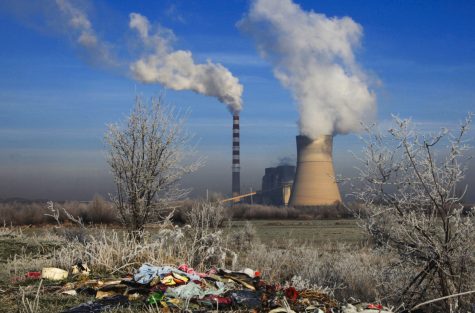Guest response: Climate Change
Data constantly evolves, is updated to include consistent information
September 14, 2018
One of the problems with deniers of climate change is that they don’t understand how science works. The Sept. 6, 2018 column from The Daily Evergreen provides a good example.
While claiming, “I’m certainly no climate change denier,” the columnist goes on to deny some basic facts about climate change. It’s a common tactic. Another is citing material published by scientists who, over several years, have been discredited for their own methods of collecting and interpreting data.
Science is never “settled,” as the columnist correctly points out, because our information is always improving. He mentions errors in the Intergovernmental Panel on Climate Change findings, but he doesn’t state when the “initial global forecasts” were made, nor when they were refuted.
“Many climate change groups neglect the whole truth when it comes to presenting solutions,” the columnists wrote. “Most groups lack comprehensive data on the rate at which the climate is changing, how much change is attributable to the U.S. and what every country can do to mitigate this rate without severe economic ramifications.”
I’d like to see peer-reviewed research upon which these statements are based.
Recently The New York Times Magazine devoted an entire issue to this topic: “Losing Earth: The Decade We Almost Stopped Climate Change.” It documents scientific and political tensions historically associated with climate change and its attendant environmental degradation. It has been widely cited for its accuracy and, yes, for its “alarmism.”
Our climate system is an evolving hyper system interspersed with unnumbered physical, chemical and biological subsystems, all interacting, often with unforeseen consequences. Last month a National Academies of Sciences paper described a “threshold temperature above which natural feedback systems that currently keep the Earth cool will unravel.”
“At this point,” scientists wrote, a cascade of climate events may, “thrust the planet into a ‘hothouse’ state.” Some natural processes could reverse, with the planet becoming a “self-heater.” The authors describe many possible “tipping points” in natural feedback processes that could lead to this result: “When one tips, many of the others follow.”
Overwhelming evidence, presented in thousands of peer-reviewed journals by tens of thousands of scientists internationally over decades, points in one direction: the world’s climate is changing, driven by carbon dioxide emitted by a growing population of humans.
That’s the bottom line.
The sad part is that we have the technical tools to address climate change and they’re constantly improving. What we lack is the collective will to apply those tools, not just in our country, not on a continent, but over the entire earth. We live on a single planet; the problems that confront us are singularly intimidating.
One proposed solution to carbon emissions is contained in the recent Citizens’ Climate Lobby resolution passed by the Pullman City Council, the act that precipitated the Evergreen’s column.
The idea of a market-based fee on carbon that mitigates the fee’s effect on low-income people has been embraced by conservatives and liberals alike because of its balanced, equitable approach. The devil is, indeed, in the details, but the concepts are sound and just across a wide and varied swath of the population.
The Evergreen’s column reveals either a genuine lack of understanding or a disingenuous attempt to undermine a proposed, good-faith, nonpartisan solution. If implemented, that solution would slow, mitigate and ultimately reverse a trend which, if permitted to continue, will unsettle and uproot most of the world’s population, and probably sooner than later.
It’s already happening.
Finally, I’d like to thank The Daily Evergreen for the paper’s interest in Pullman issues and for the opportunity to set the record straight.




















